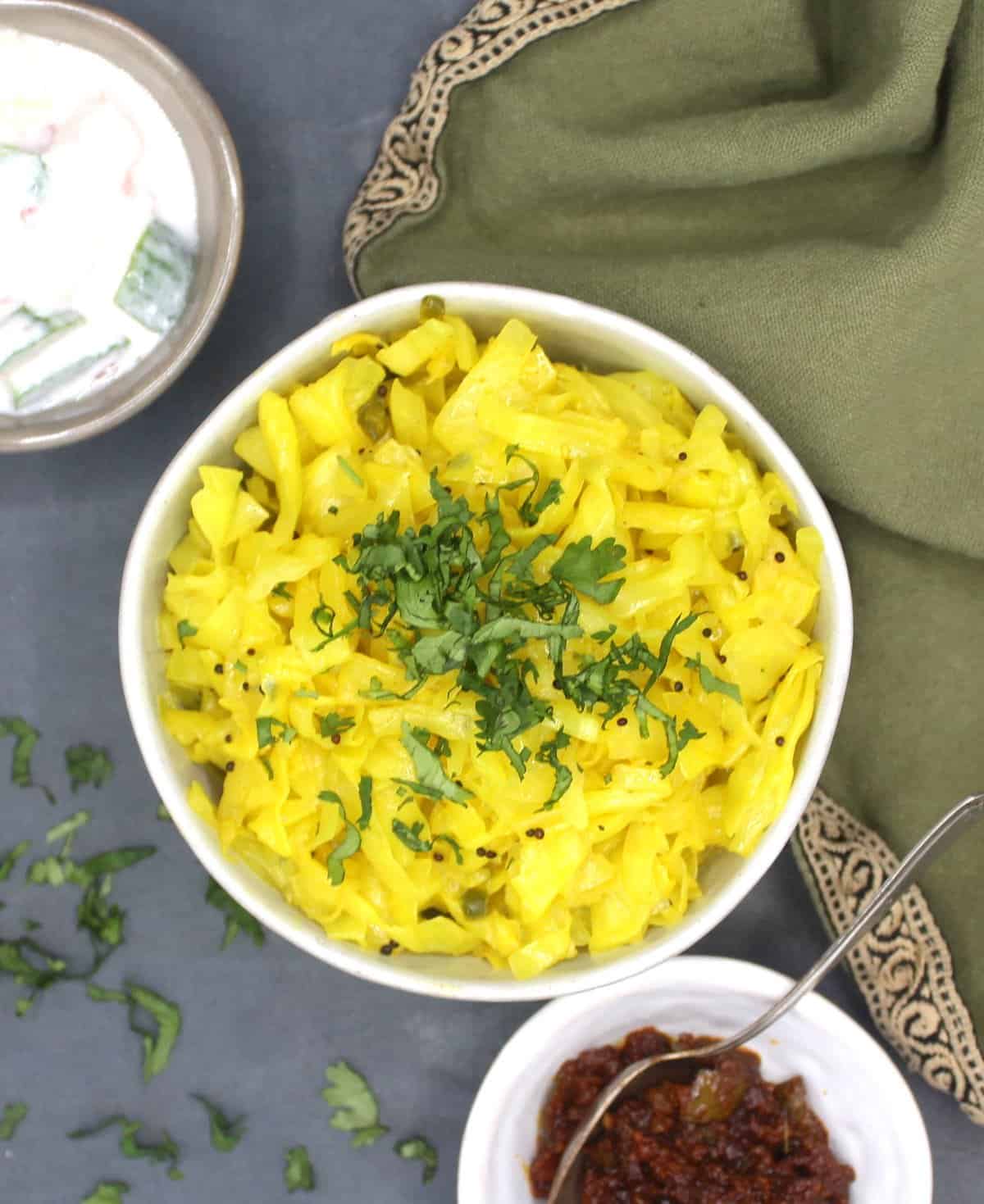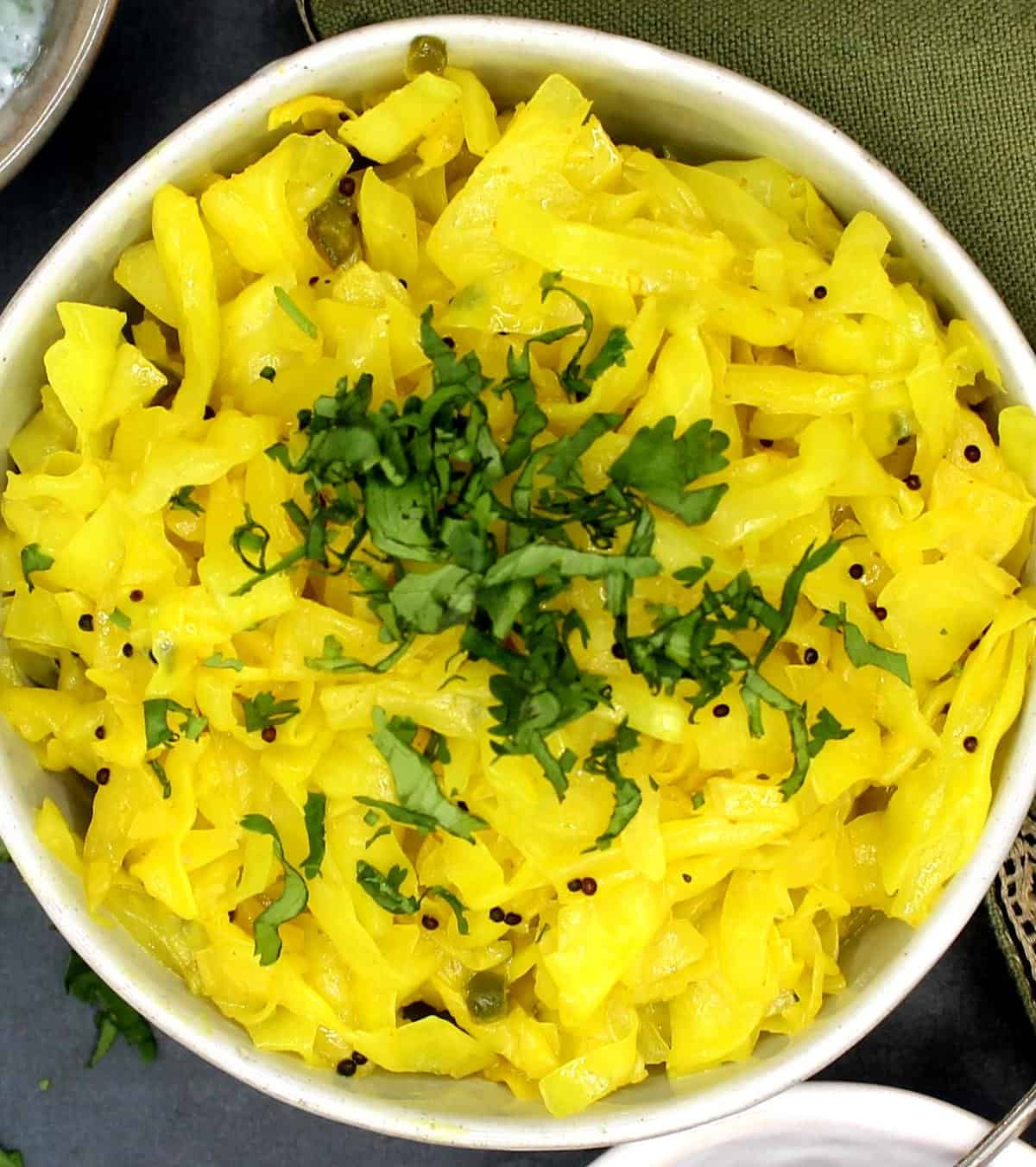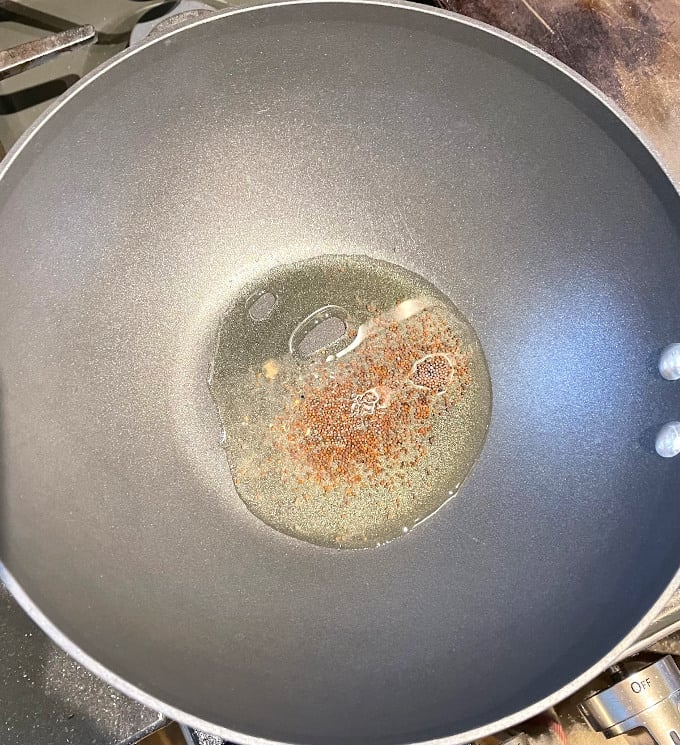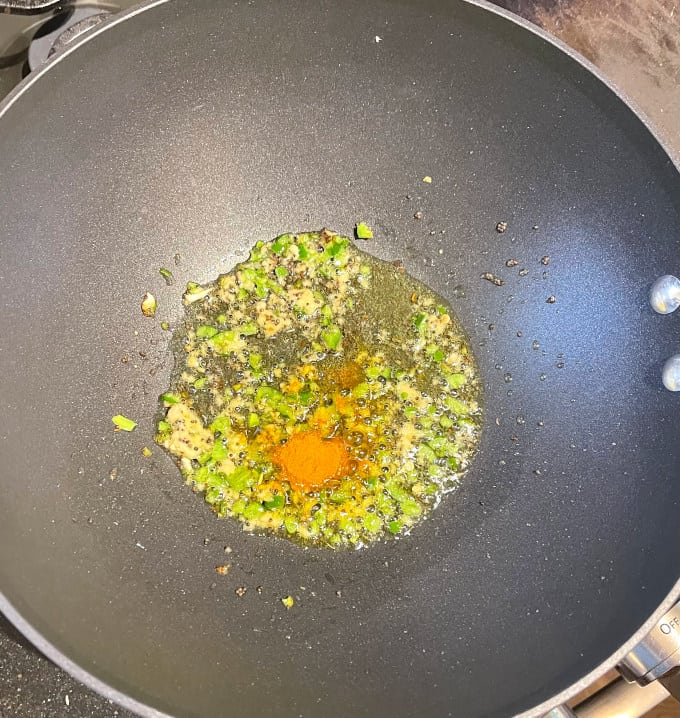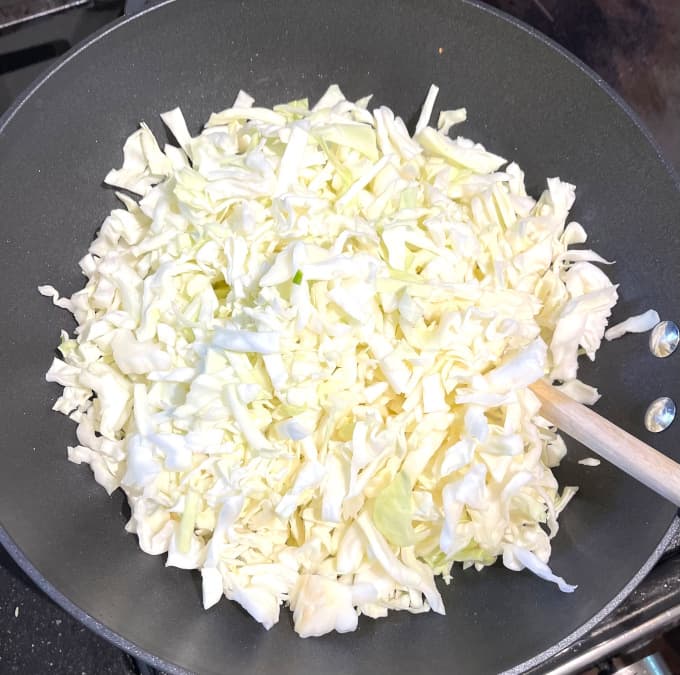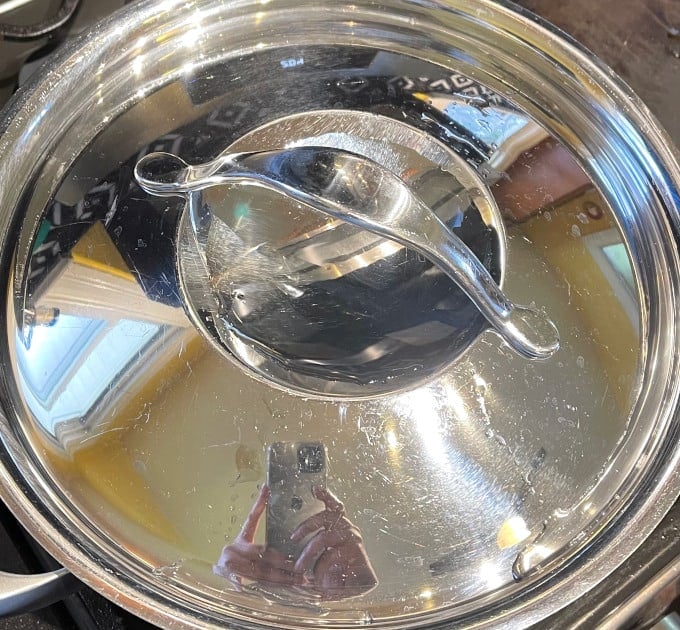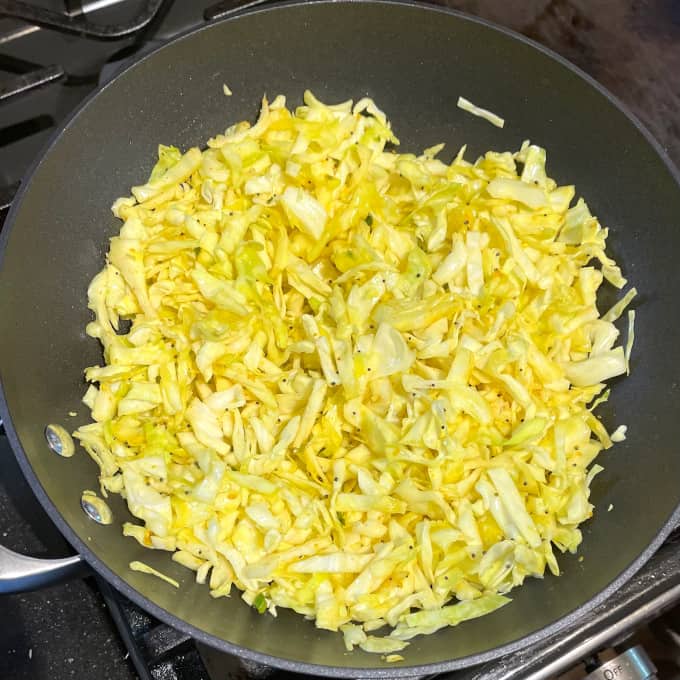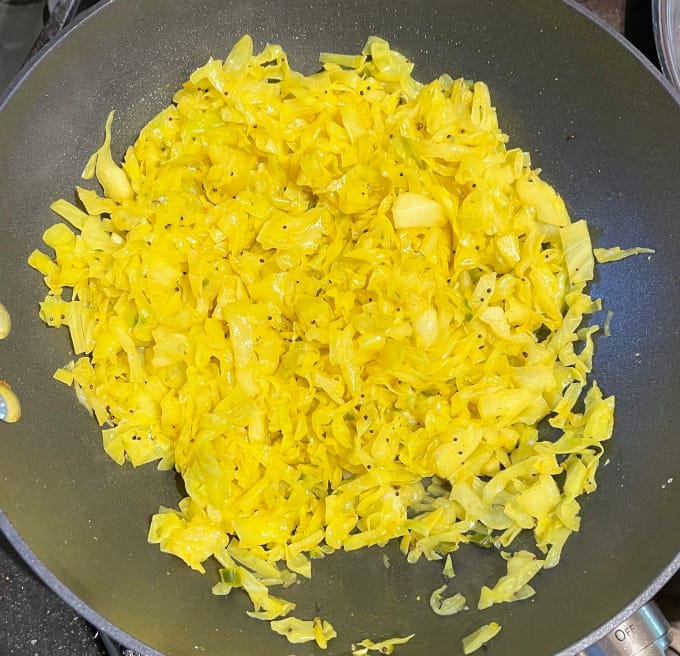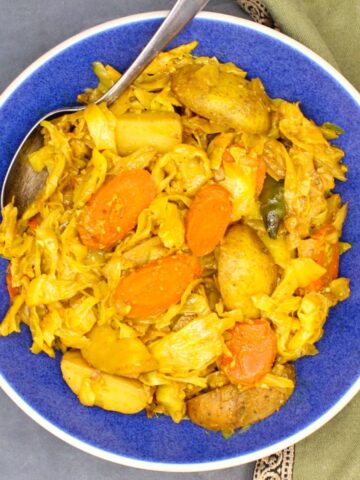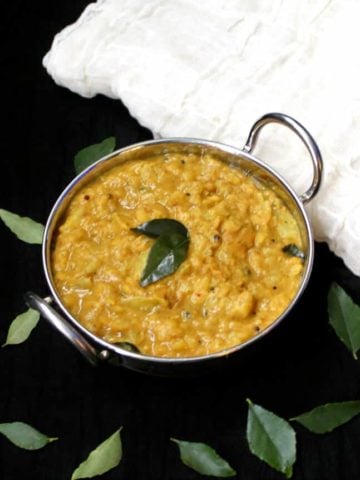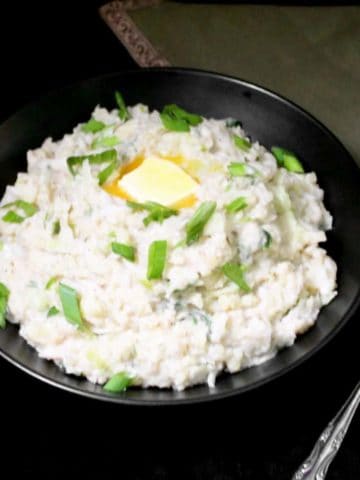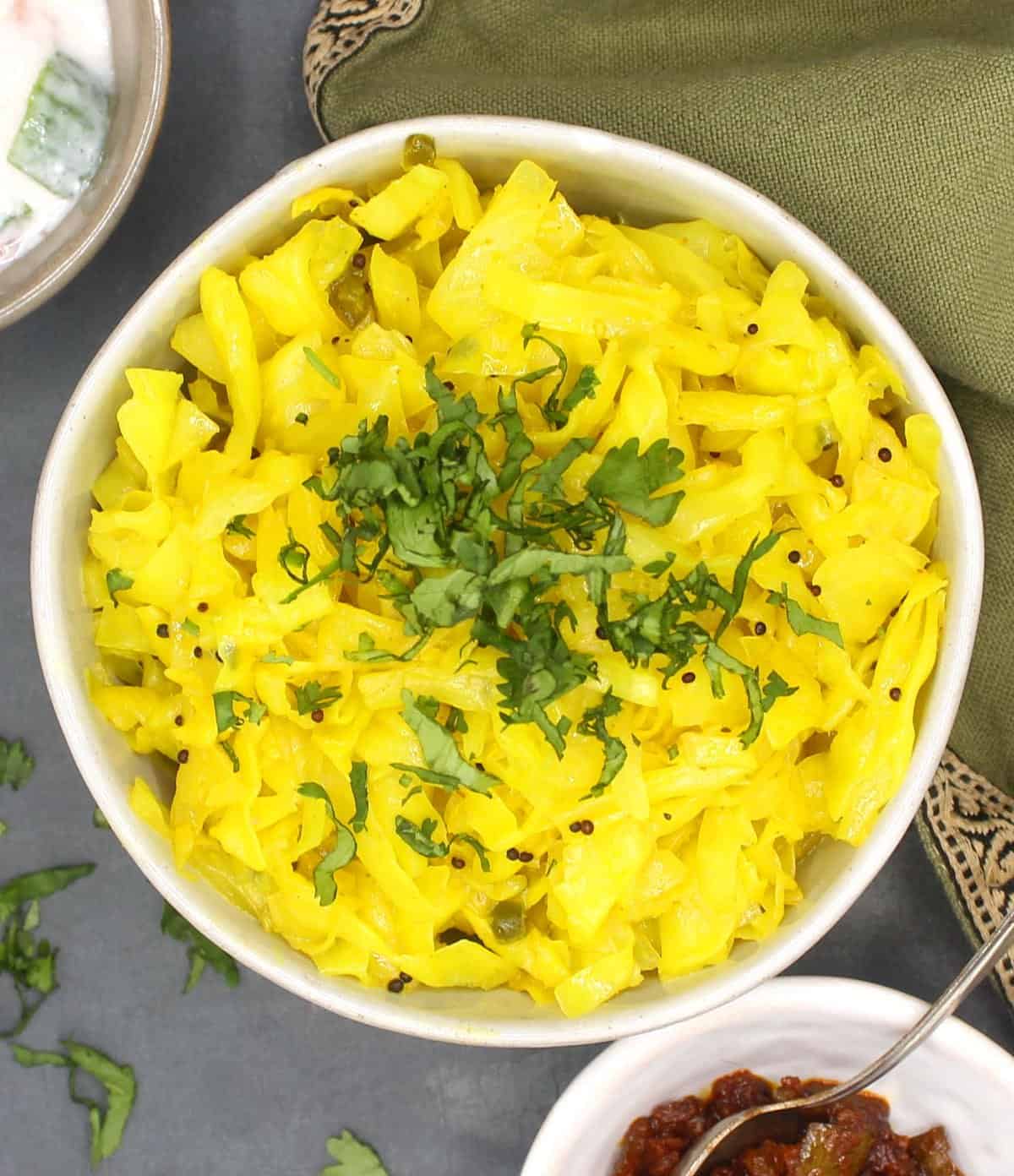It is still cabbage season and I’m sharing with you today one of my favorite ways to cook this homely but delicious and versatile veggie: a simply spiced cabbage curry. Simple vegetable sautes like these, called sabzi in north India and kari in the south, are served for dinner in Indian homes every day along with a flatbread like roti/chapati or dal and rice.
Common Indian cabbage recipes
Cabbage (patta gobhi in Hindi/muttakos in Tamil/kobi in Marathi) is widely eaten around India, as it is around the world. There are countless ways in which Indian cooks use this veggie in dishes like cabbage rice, cabbage kootu (a south Indian style dal) and these savory pancakes with cabbage, rice and lentils, among others. Gobi paratha, flatbreads stuffed with cabbage, are a popular north Indian treat, while Veg Manchurian, made with cabbage shreds and other veggies, is a beloved Indo-Chinese dish. Making curry with cabbage is a common technique employed by Indian cooks. This quick and easy cabbage curry, which goes by names like patta gobhi ki sabzi or muttakos poriyal in various parts of India, is one of the simplest Indian cabbage recipes you will encounter. It is extremely tasty on its own and you can add a few additional ingredients to it to make it even more flavorful.
Why you’ll love this cabbage curry recipe
It’s so full of flavor. Cabbage is a delicious veggie and it really gets a chance to shine in this simple setting with a few simple spices like mustard seeds, green chili peppers, ginger and garlic. It’s full of good health. Cabbage is loaded with fiber and it’s a zero-fat food. It is packed with vitamins, including Vitamin C and K. And as a member of the cruciferous family of vegetables, which includes kale, broccoli, cauliflower, collard greens and Brussels sprouts, it has extremely potent cancer-fighting and heart-healthy qualities. Cooking cabbage makes it easier to digest and easier on the thyroid. Many of us love cruciferous veggies like cabbage raw in foods like cole slaw and in salads. But as delicious as those foods are, cooking cabbage can actually make it easier to digest. Raw cabbage can also negatively impact those with hypothyroidism because it has goitrogenic substances that can further block the thyroid’s ability to use iodine, which is necessary for the thyroid to function normally. Cooking cabbage can lessen these goitrogenic properties so you can enjoy this veggie and its health benefits when you eat it in normal quantities. It’s an easy, one-pot recipe. This cabbage curry is super easy to make and you can go from scratch to done in under 30 minutes. Better still, it all comes together in one pot. It’s everyone friendly. There is no soy, nuts or gluten in this recipe and it is, of course, vegan. Cabbage is also a keto-friendly veggie, being naturally low in carbs, so it is great for anyone watching their carb intake.
How to make cabbage curry
Chop the cabbage in thin shreds. I don’t recommend doing this in a food processor because you could end up grating the cabbage. If you have a food processor that can shred the cabbage in thin, long shreds instead of grating it use it by all means. I just use my knife and it takes hardly any time at all to chop up the cabbage. Heat the oil. A wok works best for this recipe but a large skillet is fine too. Try and use something with a lid. Add the mustard seeds to the oil. Make sure the oil is very hot when you add the seeds or they won’t sputter. And it is important that they sputter because if the seeds don’t crack open they will taste bitter. Add the spices. Working over medium low heat now, stir the minced green chili pepper and ginger garlic paste into the wok. Saute them for just about a minute. Finally, turn the heat down to the lowest point on your stove and stir in the turmeric. It’s important to turn down the heat at this point because you don’t want the powdered spice to burn. Saute the turmeric for just about 30 second
Add the cabbage. Add the cabbage to the wok along with half a teaspoon of salt and quickly mix it all together. Turn the heat back up to medium-high and saute until the cabbage begins to soften. Cover the wok or skillet with a lid. Use a rimmed lid if possible–one that can hold some water in it. This is a neat technique used in Indian homes to steam veggies without adding water directly to them, which would dilute their flavor. Pour a couple of tablespoons of water on the lid carefully, making sure that it stays on the lid and doesn’t get on the stove. If you don’t have a rimmed lid that can hold the water, just keep the heat turned to the lowest point and check the veggies frequently to make sure they don’t burn.
Stir the cabbage occasionally. How long you want to cook the cabbage for is up to you. Some like the cabbage to retain a bit of al dente texture, others, like me, like it soft and silky. I cook the cabbage for around 10 minutes, but for a more toothsome texture you can turn off the heat sooner. You can also let the cabbage brown at the bottom of the wok–as counterintuitive as that may sound it actually adds nice flavor to the curry. Add salt and finish with cilantro. Once the cabbage has cooked to your liking check salt and add more if needed. Stir in the cilantro. Serve cabbage curry hot.
Serving suggestions
The cabbage curry is delicious with roti/chapati and/or basmati rice with a simple dal like this Dal Tadka. You can also serve it with any Indian style curry or rice recipe.
Curry leaves. Curry leaves, added right after the mustard seeds and sauteed for just a minute or so, add lots of flavor and the curry cabbage combo is amazing. Onions. Saute a chopped onion in the wok until soft and before adding the cabbage in. 1 tablespoon urad dal. The urad dal is roasted until golden and adds a nice crunch to the cabbage sabzi. Add it right after the chili peppers and ginger garlic paste and saute until they are a light golden brown before adding the cabbage. Green peas. Green peas and cabbage are great flavors together and you can stir in fresh peas along with the cabbage or frozen peas toward the end of cooking. You can also use other vegetables like carrots, green bell peppers and potatoes with the cabbage. Garam masala. For more spice in this recipe, add two teaspoons of garam masala close to the end of cooking. Sprinkle on the garam masala after the cabbage has cooked, mix it in, and turn off the heat. Remember garam masala is already cooked so you don’t have to cook it again. Curry powder. For a differently delicious and more of a south Indian flavor use curry powder, again toward the end of cooking. This would be especially wonderful if you used curry leaves too. Grated, unsweetened coconut. Stir in ¼ cup of unsweetened coconut into the curry just before you turn off the heat, then sprinkle on the cilantro. Together the coconut and cilantro add wonderful flavor. If you don’t have coconut you can use coconut milk instead: stir in ¼ cup into the curry just before you turn off the heat and let it warm through. To make this recipe saucier you can add more coconut milk. Lemon. Stir in the juice of a lemon, after you turn off the heat and before you stir in the cilantro.
Check to get new recipe updates by email.
Storage instructions
Refrigerator: Leftovers of the cabbage curry will keep in the fridge for up to three days. Freezer: For longer storage you can freeze the curry in an airtight container for up to three months. Reheating: You can thaw the frozen curry in the microwave before serving. Or let it thaw and then reheat in a wok on the stovetop.
More tasty cabbage recipes
Recipe card

